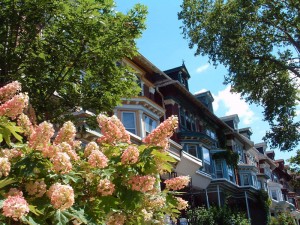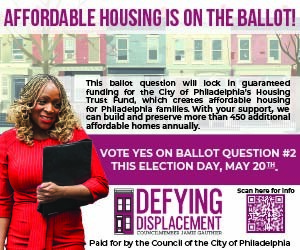Housing prices are bouncing back all over Philadelphia, except in West Philly, according to a recent report.
Second quarter home prices fell 7.8 percent in University City compared to the first quarter and an average of 5.9 percent in other parts of West Philly, the Fels Institute of Government analysis shows.
Prices around the city bottomed out about 18 months ago and prices in many neighborhoods have begun to bounce back (as much as 8 percent in parts of North Philly), while prices in this side of the Schuylkill have lagged. Not to worry, said Kevin Gillen, a senior research consultant at Fels and the report author. He believes the down tick in house value is just a short-term phenomenon and can be regarded as more of a “correction” in pricing, particularly for University City, which saw double-digit home price rises for the last 10 to 15 years.
“The prices are still way above where they were 10 years ago. It’s like 100 steps forward and 15 steps back. Think of it as a mean reversion,” said Gillen, who believes the long-term trend for the area is still optimistic. “It’s positive going forward but a more modest positive than you had in the past.”
Average home prices across the city have increased 3.1 percent compared to the second quarter last year.
This over-inflation during the decade’s housing boom, said Gillen, can be attributed to University of Pennsylvania renewed, three-fold investment in the neighborhood: the creation of the University City Business District, which led to better public services; a mortgage program aimed at UPenn faculty and staff to encourage them to invest in the neighborhood; and the opening of the Penn Alexander School at 43rd and Locust Streets 10 years ago.
Realtor Melani Lamond, who has been selling real estate in West Philly for 30 years, tells a different story. She said the average price of the mostly single-family University City properties she sold this year are 7.4 percent above 2012. She said she has also been involved in twice as many sales this year compared to last year. Lamond says her sales have ranged from $76,000 to $577,000 in the University City area.
“University City’s popularity has increased enormously, and it continues to increase every year,” Lamond, a broker at Urban & Bye Realty, said by e-mail. “Buyers tell me that they want to live near the restaurants on Baltimore Avenue; they want to live in a diverse and cosmopolitan neighborhood; they want to own historic houses; they want to be near public transportation and greenery.”
Lamond also noted that there are more prospective buyers than actual homes available for sale in the area.
Both Lamond and Gillen agree that the announcement of a lottery at the Penn Alexander School (PAS), which has been a key driver of prices in the area, may impact future home prices. When the school opened a decade ago, house values in the PAS catchment area increased every year, with properties costing at least $100,000 more than for similar homes outside the school’s catchment, said Gillen.
“I believe that the PAS catchment area prices are somewhat flat, but a greater change is that so many families are choosing to purchase outside the PAS boundary area,” Lamond wrote, noting that fewer homes are available for sale in the catchment. “Buyers are either focusing on [Henry C.] Lea School [at 47th and Locust Streets] or planning on using other school options that parents used before PAS existed. So they are buying houses with lower price tags.”
Gillen said that another reason for the housing price decline could be the pending increase in property taxes as a result of the Actual Value Initiative (AVI).
“If you increase your tax bill, but don’t improve your public services, all I’ve really done is take more money out of your pocket. You can expect it to have a negative capitalization,” Gillen told West Philly Local. “The value of your house will reflect if your taxes are higher, but not your public services.”
Both Gillen and Lamond also agreed that housing price increases in an area where values are already inflated compared to nearby neighborhoods could negatively impact the neighborhoods in other ways. Expensive values can “become an impediment to keeping the neighborhood diverse,” said Lamond.
Gillen said that upticks in property values can lower the quality of life because “so much of the income is spent on the cost of housing among other things.”
“You don’t want your housing to become unaffordable. You don’t want housing prices to indefinitely grow faster than incomes because that just becomes unaffordable,” he said. “A decrease in house prices is the same thing as an increase in housing affordability.”
–Annamarya Scaccia









Recent Comments